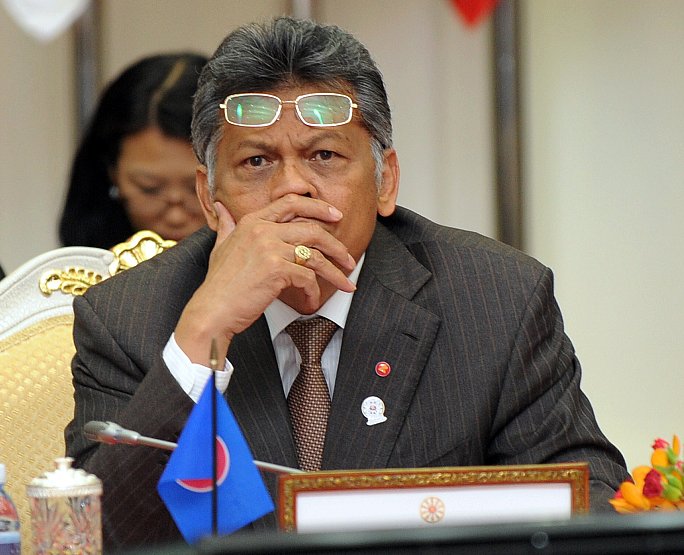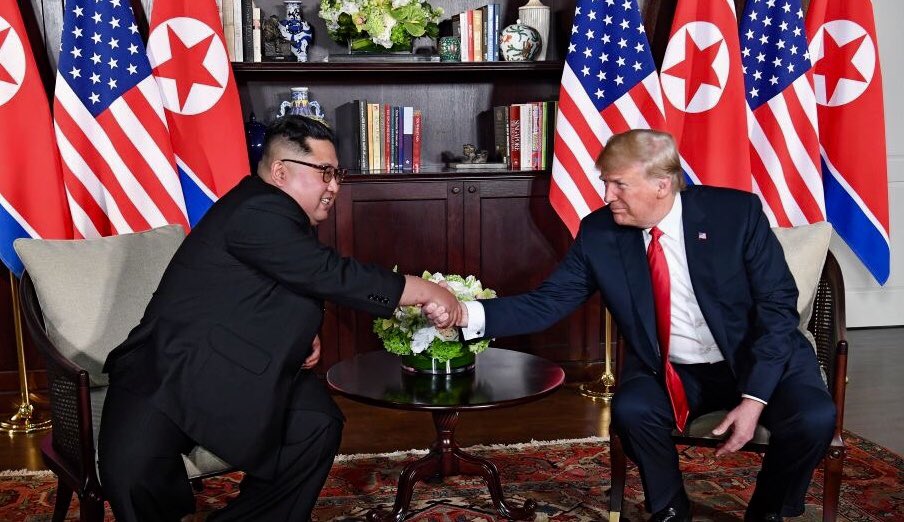[captionpix align=”left” theme=”elegant” width=”320″ imgsrc=” http://www.wantchinatimes.com/newsphoto/2012-05-16/450/USNV-124546_copy1.jpg ” captiontext=” The USS North Carolina is stationed only 200 km from the Chinese-Philippine standoff at the Scarborough Shoal. The row is increasingly seen as a proxy dispute between Washington and Beijing. “]
A House Divided?
The Association of Southeast Asian Nations (ASEAN) held its regional forum in July, with Phnom Penh, Cambodia as this year’s host. This meeting ended with a historic event. For the first time in its 45-year existence, the organization and its 10 member states failed to issue a joint statement. What divides the member states is a growing theme that affects everybody: an emerging US-Chinese rivalry for regional influence. In fact, the lack of unity within ASEAN is quite ironic. Formed in 1967 by Indonesia, Singapore, Malaysia, Thailand and the Philippines, ASEAN was a pinnacle of “Third Worldism,” which described the desire of many countries to stay neutral in the Cold War and focus instead of nation-building and economic development. Not only was ASEAN partly a reaction to the struggle over Vietnam in the 1960s but its solidarity and shared historical memory was so strong that it greatly protested greater Japanese participation as well.
Last month, that sense of cooperation was broken as a new polarity has emerged in Southeast Asia. The key point of disagreement was over the continuing territorial dispute in the South China Sea between Beijing and Manila over the Scarborough Shoals, where the Philippines has accused Chinese fishermen of illegally using the waters, provoking the involvement of both countries’ navies. While the Philippines, supported by Thailand and Vietnam, pushed for mentioning the dispute in the joint communiqué, Cambodia repeatedly dissented, with Foreign Minister Hor Namhong stating, “I have told my colleagues that the meeting of the ASEAN foreign ministers is not a court, a place to give a verdict about the dispute.”
However, nobody perceives Cambodia’s actions as aiming to preserve ASEAN’s neutrality. The government of Cambodian Prime Minister Hun Sen is seen as pro-China with the two countries enjoying increasingly close ties. Chinese aid to Cambodia, totalling $10 billion in the last decade, was 10 times greater than that promised by Washington, which holds particular importance given the country’s economic woes. Cambodia ranks 138 of 187 in the most recent Human Development Index, suggesting a relatively low quality of life compared to its neighbours, while GDP per capita is estimated to be $2,200, beating only Myanmar. Chinese investments have played a paramount role in economic development through building roads, railways, ports and possible future oil pipelines connecting Cambodia and Laos to southern China.
In the meantime, the intra-ASEAN fallout has been very public. The Chairman of the Cambodian National Assembly visited Hanoi last month in an exercise of damage control while Indonesian Foreign Minister Marty Natalegawa is attempting to act as a mediator. However, the Philippine-Cambodian relationships continues to be tense as Cambodia’s ambassador to the Philippines accused Vietnam of playing “dirty politics” over the South China Sea within ASEAN, which prompted an angry response from Manila.
[captionpix align=”left” theme=”elegant” width=”320″ imgsrc=” http://cache.daylife.com/imageserve/0f1fcvV9wn7Lu/610x.jpg ” captiontext=” Chinese President Hu Jintao with Cambodian Prime Minister Hun Sen. The two countries are increasingly bound together by economic ties. “]
US-Chinese Polarization
Chinese influence in Cambodia tells only half the story, as Washington has not turned away from this region. As a Bangkok Post editorial argues, “current internal ASEAN rifts are attributable not just to China’s assertive rise but also to the US’ vigorous re-engagement.” The Obama administration, while officially neutral, has been publicly supportive of Manila in its row with China by reaffirming the bilateral alliance between the US and the Philippines. Moreover, a Philippine-Australian accord ratified last week, which would see Australian troops train with their Filipino counterparts inside the country, is seen as an attempt to match Chinese power.
American regional policy extends well beyond the Scarborough Shoal. For 11 days in June, the US and Indonesia conducted joint military exercises, the sixth since 2007. In a visit to Vietnam in the same month, Defense Secretary Leon Panetta expressed hope that the US would strengthen ties with its former enemy, with military cooperation being a main pillar.
It is also important to remember that ongoing Chinese-Vietnamese territorial quarrels exist in the Paracel and Spratly Islands in the South China Sea, frequently sparking anti-Beijing sentiments in Hanoi. The South China Sea has displayed bouts of déjà vu as Cold War themes re-emerge. Taiwan, officially the Republic of China and a US ally, has also claimed parts of the Spratly Islands and has announced greater military deployment there. This move does not bode well for cross-straits relations.
These rampant overlapping territorial claims in which both China and the US have involved themselves have become proxy battles as Washington tries to curb what it sees as growing Chinese influence. Perhaps ASEAN’s divisions are exaggerated, as it is only Cambodia that has fallen into the Chinese camp. But the real danger that befalls the organization is the dominance of international rivalries over regional interests in political discourse.
The World Needs ASEAN
ASEAN is far too important to break up over US-Chinese rivalry because many political and economic issues are at stake. Politically, splitting ASEAN will undoubtedly diminish its regional clout. Member states have consistently discussed many prominent issues apart from the South China Sea. Tackling the North Korean nuclear program has been a critical topic in recent summits and ASEAN is a forum by which the international community can deal with this problem, with both Washington and Beijing’s cooperation. The ASEAN Regional Forum in which China, the US, Russia, Japan, India and many others take part is another mechanism of promoting wider understanding and cooperation across the Asian continent.
But perhaps ASEAN’s biggest asset is that many of its member states share common goals. Asia’s economic growth, in light of sluggishness in the US and EU, is not only about China and India. Southeast Asia is experiencing impressive economic growth, as ASEAN’s combined GDP already eclipses that of India and could exceed that of Japan by 2028. Indonesia, with the 4th largest population in the world, has the makings of an economic success story. Combined with strong tertiary-based economies, resource abundance and growing international economic integration, Southeast Asia will be a bulwark against an age of worldwide economic stagnation.
Well-functioning institutions are essential for continued economic success in South East Asia. For now, with ethnic and sectarian conflict a problem in almost all ASEAN countries, and lingering hostilities existing between many, what is needed is a lesson in history. Only when ASEAN remembers its original purpose to steer clear of divisive international rivalries and give priority to regional political and economic development will the future of the region be secure.




